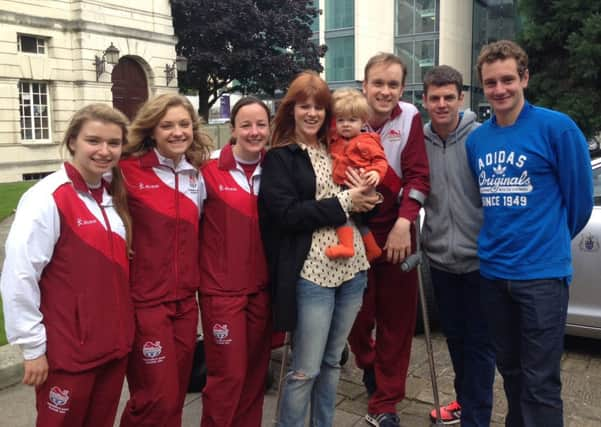Squash: Hip op’ done and dusted now the physio is calling the tune – Willstrop


Any venturing into the big wide world tends to be challenging but pleasant enough. Crutches are helpful props: people stand aside and offer spare seats on buses and I’ve been offered discounts even in cafés. I was asked if I needed a wheelchair once and many enquire with a grimace before kindly sympathising.
Inquisitive types state furtively that they thought hip operations were for old people. This makes me feel so much better and so much worse, and I respond that I’m only getting what I deserve after a lifetime playing a stupidly hard sport.
Advertisement
Hide AdAdvertisement
Hide AdSport takes a toll on the body, squash more than most. I’ve learnt recently that I’ve done mine some damage and the unfettered pliability I had as a 21-year-old might not be realisable in the same way again. I’m a big unit, lugging 20 kilos more than most players with every movement I make: solid weight going through the body hundreds of times every week over 25 years and it’s clear to see why there are creaks.
I aspire to be a professional player once more, but long-term preservation needs to be considered, so rehabilitation and training will have to be more careful and subtle now.
I’ve been watching bits of the US Open, wincing as the players bound around the court, hammering their bodies into the ground. I know I’m not the only one, all full-time squash players will have some degree of joint damage that could have implications in the future. Many squash players have retired early: Chris Robertson and my brother David Campion, England’s national coaches, both had career-ending hip issues. Jonah Barrington had hip replacements, and more recently Anthony Ricketts and Lee Beachill had knee injuries which curtailed their careers, and they were both younger than I am now.
It’s tricky ground but I have a highly regarded hip surgeon Max Fehily looking after me, and I’m so fortunate to have my physio Alison Rose behind the rehabilitation process every step of the way. Mark Campbell, my conditioning coach, is at some stage faced with getting me back into the gym and fit. I must mention Vanessa too who now has two babies to look after, wash and dress each morning.
Advertisement
Hide AdAdvertisement
Hide AdThe first four weeks have been restful. Prof Fehily repaired a tear of the labrum (the fibrous rim of cartilage around the hip joint that keeps the head of the femur in the socket and functioning normally) and cleaned up mess around the joint, causing some trauma which needs to heal.
WSA player Joelle King recently posted a photo of her legs after an operation she had in August. The muscle wastage on her operated leg is drastic; we are so used to using the muscles in the legs to such extremes they quickly deteriorate when we don’t.
To counter this as much as possible, Alison had me doing basic rehabilitation from the first week. Low level leg extensions and basic Pilates on the floor added to gentle mobility work was all that was necessary at that stage.
Joelle potentially has much longer to sit out than I have, having ruptured her Achilles, but muscle decline through inactivity is still an issue, so I use a compex machine every evening to prevent this as much as possible. Sticking wired electrode pads onto the muscles, I simply sit and let the electrodes send impulses which fire the muscles I need to stay strong. It’s no substitute for real training, but can help.
Advertisement
Hide AdAdvertisement
Hide AdBy week three Alison allowed me time in the pool. The first thing I could do was swim a little with arms only, which at least quickened the heart. The weight of the water enables me to practice walking, squatting, lunging and calf-strengthening. It is helpful that the body feels the sensations without the weight going through it. This type of proprioception work, through which the body and brain become coordinated by practicing floor contacts, helps it to stay accustomed to the movements it will eventually want to make.
To add to these sessions, Alison is seeing me twice a week at her clinic in Leeds and the time is spent on soft tissue work around the hip and in my deep adductors. This isn’t particularly pleasant, but I can move so much more freely each time. She is also working to free up nerves and major organs, which sounds nasty but has worked for me. She then goes through the list of exercises for home. Though the right side is inactive, I can maintain the strength in the rest of my body, so the abdominals and left side are gaining strength, even though the muscles can’t be seen yet for the fat, and I’m having fun doing some upper body weights, which can get neglected when we are in full flow during a season. By the end of this I’m going for the biggest biceps in squash.